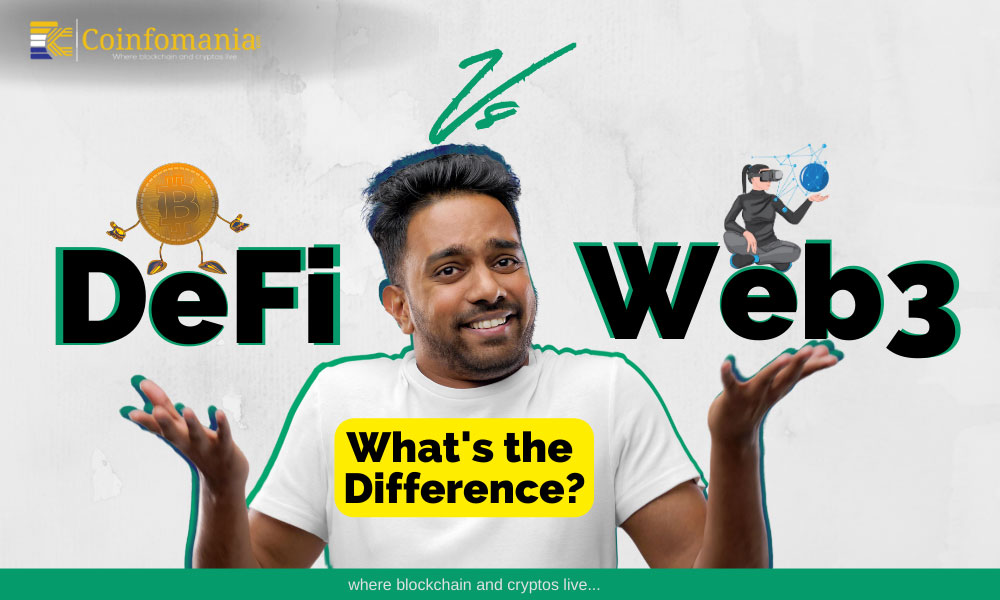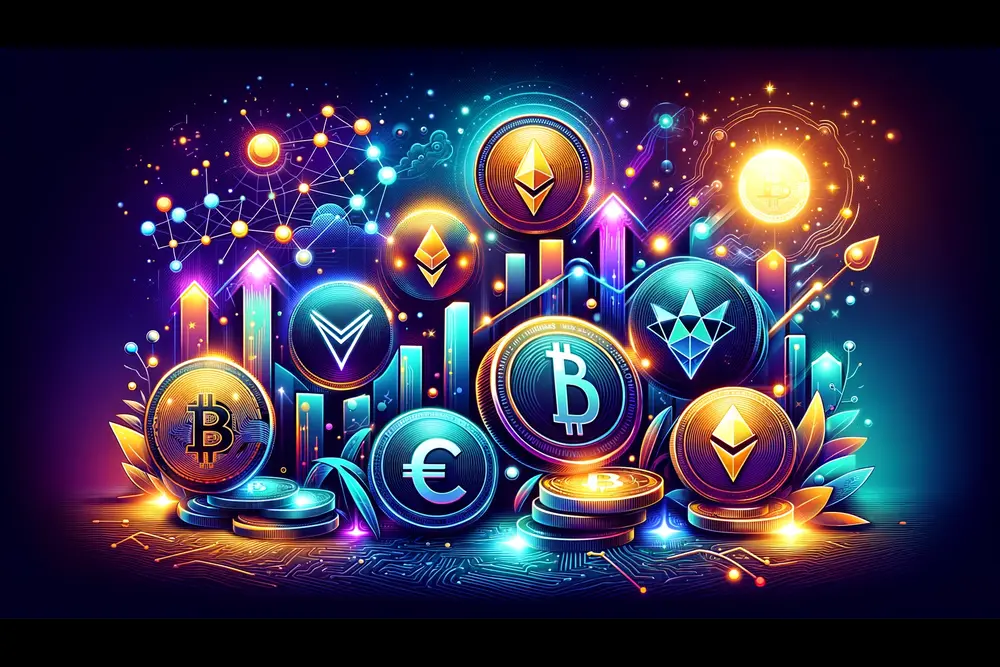Blockchain is gradually defining the future of technology. Understanding the technology requires knowing the meaning of several terminologies connected to it. Among them are DeFi and Web3.
“Is DeFi different from Web3?” You might ask. Yes, they are different, but they also have their similarities. Before we go further, let us know what they mean.
Decentralized finance (DeFi) is a technology that harnesses the blockchain to offer financial services to users. Web3, on the other hand, is the third generation of the internet that integrates blockchain technology to give users more control over their data.
This article provides insight into the differences between DeFi and Web3 through the following topics:
- Is DeFi a Part of Web3?
- What Exactly Is Web3 and How Does It Work?
- What Exactly Is DeFi and How Does It Work?
- How Can Web3 Improve DeFi?
- Conclusion
Is DeFi a Part of Web3?
Yes, it is. Here’s why:
Web3, which we will call the decentralized internet, is geared towards putting power into users’ hands. It seeks to revolutionize the future of data storage, finances, and other utilities common to the Internet.
Empowered by blockchain technology, Web3 brings cryptocurrencies, DeFi, and other financial products to users.
Despite the similarities they share, DeFi vs. Web3 are different. Web3 encompasses the entire internet. DeFi, on the other hand, is only a subset of Web3 that runs on smart contracts. These smart contracts are programming codes deployed on the blockchain to perform specific functions.
What Exactly Is Web3 and How Does It Work?
Web3 is the future of the internet. It is sometimes called Web 3.0, Web 3, or third web. Notice how the web has evolved since its debut in the 1980s.
In 1989, the British scientist Tim Berners-Lee invented the World Wide Web (WWW), also called Web1. The technology connected users to the internet, enabling them only to search and read information. No wonder it was dubbed the “read-only web.” The limitation here is that users cannot send data to other users. They could communicate only with the web.
Web2 solved the issue of user-to-user communication with the introduction of social networking, user-generated content, and cloud computation. The limitation tied to the second generation of the internet is the heavy dependence on central organizations for personal data storage. Most internet users depend on companies like Microsoft, Amazon, Meta, Google, and Twitter to keep their data. The danger here is the possible exploitation of users’ data to the detriment of their privacy.
With the introduction of Web3, users get control over their data and money. Although the Web3 ecosystem is evolving, several services are gaining traction globally. These include cryptocurrency trading, decentralized finance, artificial intelligence, metaverse, and non-fungible tokens (NFTs).
Accessing most of these services requires Web3 wallets. It is noteworthy that there is no fixed date for Web3 full launch.
What Exactly Is DeFi and How Does It Work?
Decentralized finance (DeFi) is a term for financial services built on the blockchain using smart contracts. These financial services and products include derivatives trading, lending, staking, yield farming, etc.
Traditional financial systems like banks and other financial institutions usually dictate how users spend their money. They also mandate that users submit personal information before accessing some or all of their services. They often impose complex fee structures on some of their products.
These existing financial companies are also susceptible to security breaches as they have a single point of failure, no thanks to centralization. Data on traditional finance is difficult to trace, as they aren’t transparent to the public.
DeFi seeks to take power from these entities. With the new technology, users have complete control over their money instead of entrusting them to centralized authorities. It also features transparency, enabling anyone to trace transactions on-chain. Users do not need to submit any personal data to access DeFi products. Most DeFi projects implement a user-friendly fee structure.
No singular individual or firm built DeFi. Instead, several teams are actively developing protocols that offer decentralized finance services. A prime example is Ethereum, the first smart contract-enabled blockchain network. DeFi protocols can live on any blockchain network that has smart contract functionality.
Notable examples of DeFi projects are the lending protocol Compound Finance, decentralized exchange Uniswap, and the liquid staking solution Lido.
How Can Web3 Improve DeFi?
As discussed earlier, DeFi is part of the services under Web3. It means that there are several ways that Web3 can improve the DeFi ecosystem. Here are some of them:
- User Base
The increase in everyday internet users benefits Web2 internet service providers such as Twitter, Telegram, Meta (Facebook), Discord, Reddit, etc. In the same way, the increase in people adopting Web3 services will benefit the DeFi ecosystem, as it is one of these services.
For example, the integration of NFT collectibles on social media platforms like Reddit onboard millions of new users to the Web3 ecosystem. At the same time, these new users interact with the blockchain to use their collectibles and could potentially trade on a decentralized exchange to exchange their collectibles. Thus, the DeFi sector benefits from the growth of Web3.
- Ease of Accessibility
Users can access several Web3 services through a Web3 wallet. A Web3 wallet is a digital wallet that stores cryptocurrencies, NFTs, and other digital assets. These wallets serve as gateways between a user and a blockchain.
DeFi protocols require users to connect their Web3 wallets to access services. If the development of the Web3 ecosystem is poor, it will be tough to access decentralized finance products. It, therefore, shows that the growth of the Web3 ecosystem is required to bolster the DeFi family.
- Creation and Disruption
Developers are responsible for the building of the Web3 ecosystem. As these developers make the nascent ecosystem whole, more creators get inspired to create DeFi projects, bolstering disruption to the DeFi family.
Conclusion
DeFi vs. Web3 are two emerging technologies gradually shaping the digital world. This explainer guide discussed the meaning of DeFi vs. Web3. It also answered the question: “Is DeFi different from Web3?” With the growing adoption of blockchain technology, users exploring any DeFi service must ensure they use trustworthy Web3 wallets.










